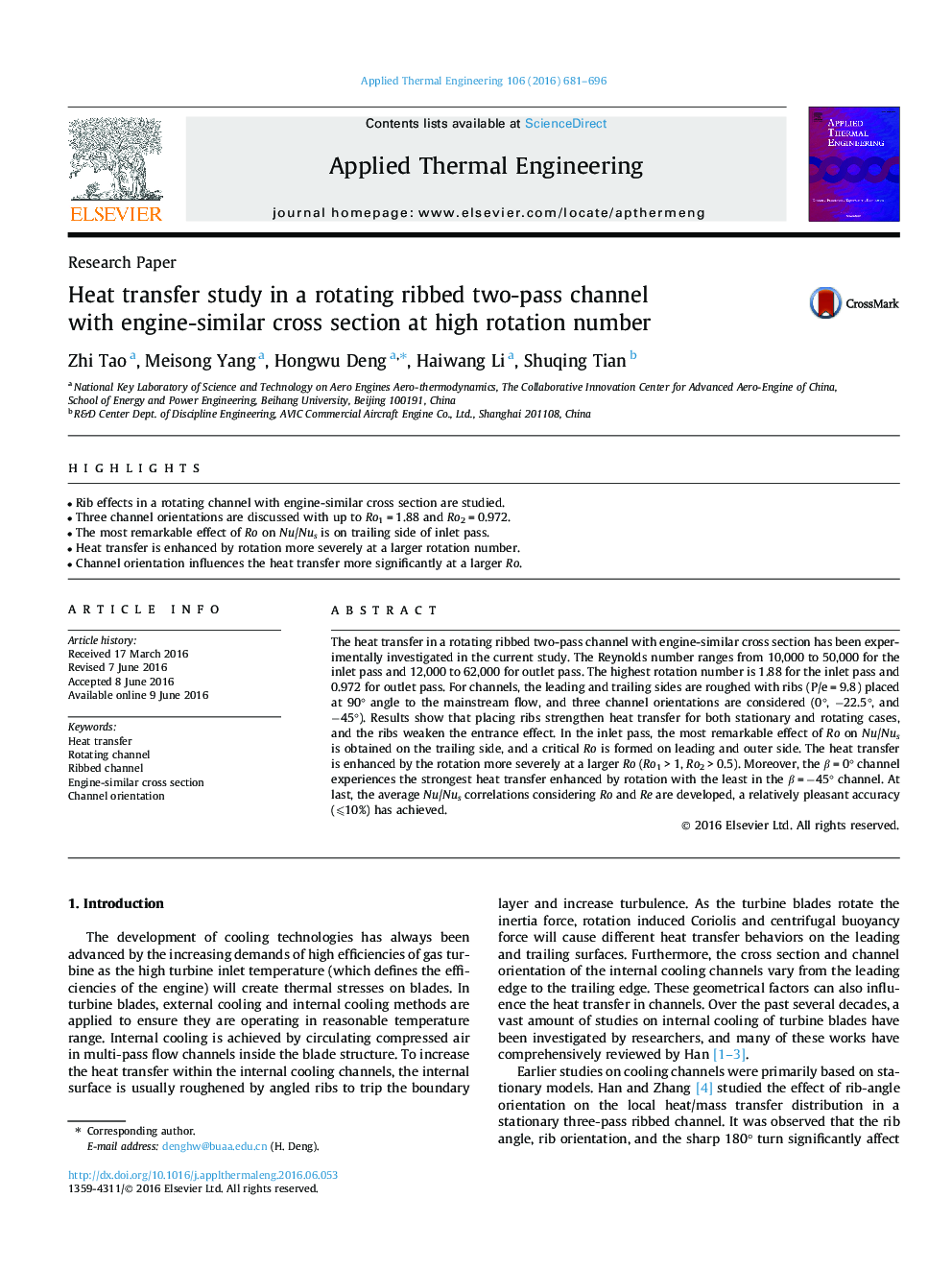| Article ID | Journal | Published Year | Pages | File Type |
|---|---|---|---|---|
| 7047464 | Applied Thermal Engineering | 2016 | 16 Pages |
Abstract
The heat transfer in a rotating ribbed two-pass channel with engine-similar cross section has been experimentally investigated in the current study. The Reynolds number ranges from 10,000 to 50,000 for the inlet pass and 12,000 to 62,000 for outlet pass. The highest rotation number is 1.88 for the inlet pass and 0.972 for outlet pass. For channels, the leading and trailing sides are roughed with ribs (P/e = 9.8) placed at 90° angle to the mainstream flow, and three channel orientations are considered (0°, â22.5°, and â45°). Results show that placing ribs strengthen heat transfer for both stationary and rotating cases, and the ribs weaken the entrance effect. In the inlet pass, the most remarkable effect of Ro on Nu/Nus is obtained on the trailing side, and a critical Ro is formed on leading and outer side. The heat transfer is enhanced by the rotation more severely at a larger Ro (Ro1 > 1, Ro2 > 0.5). Moreover, the β = 0° channel experiences the strongest heat transfer enhanced by rotation with the least in the β = â45° channel. At last, the average Nu/Nus correlations considering Ro and Re are developed, a relatively pleasant accuracy (⩽10%) has achieved.
Related Topics
Physical Sciences and Engineering
Chemical Engineering
Fluid Flow and Transfer Processes
Authors
Zhi Tao, Meisong Yang, Hongwu Deng, Haiwang Li, Shuqing Tian,
